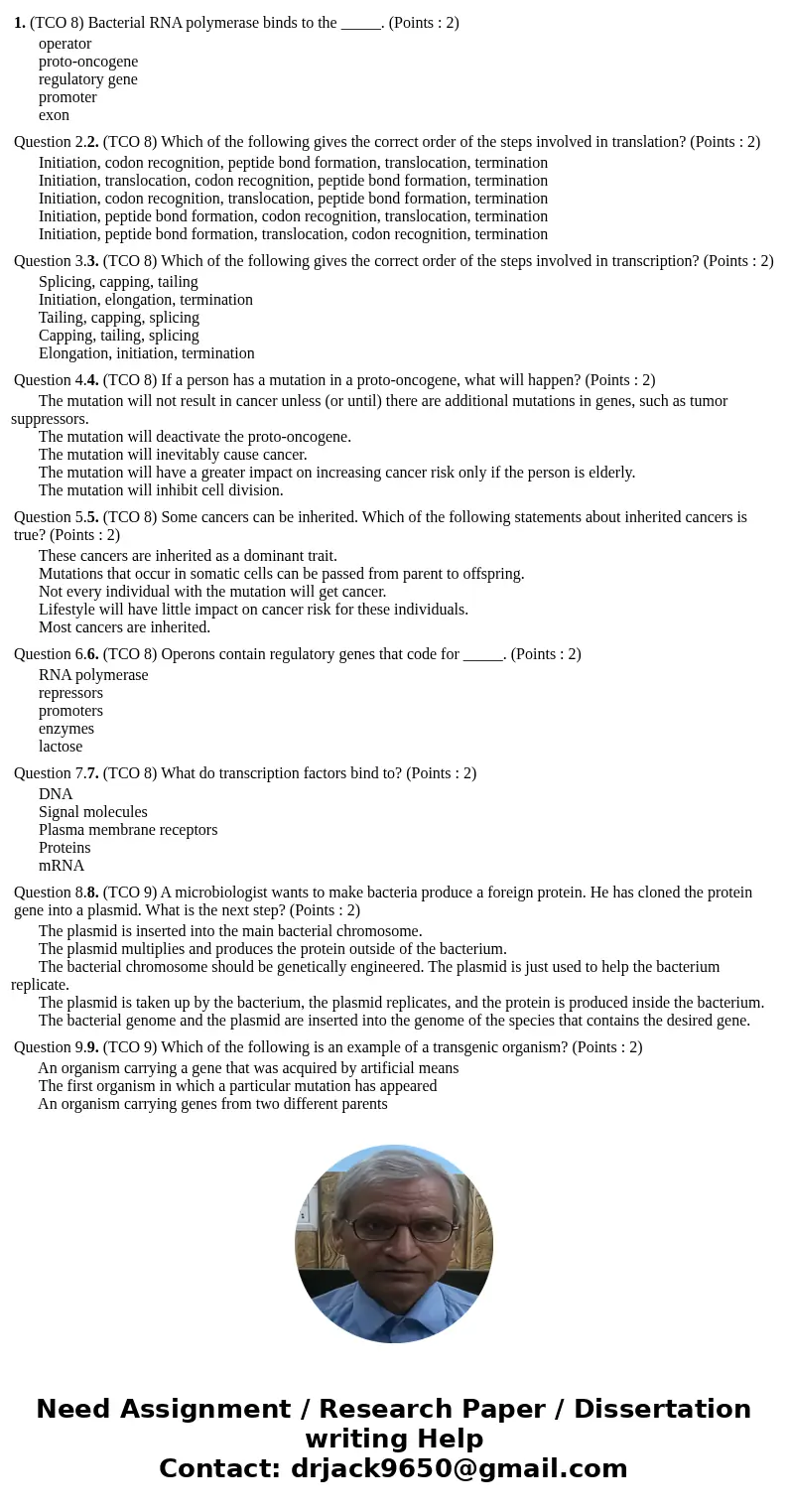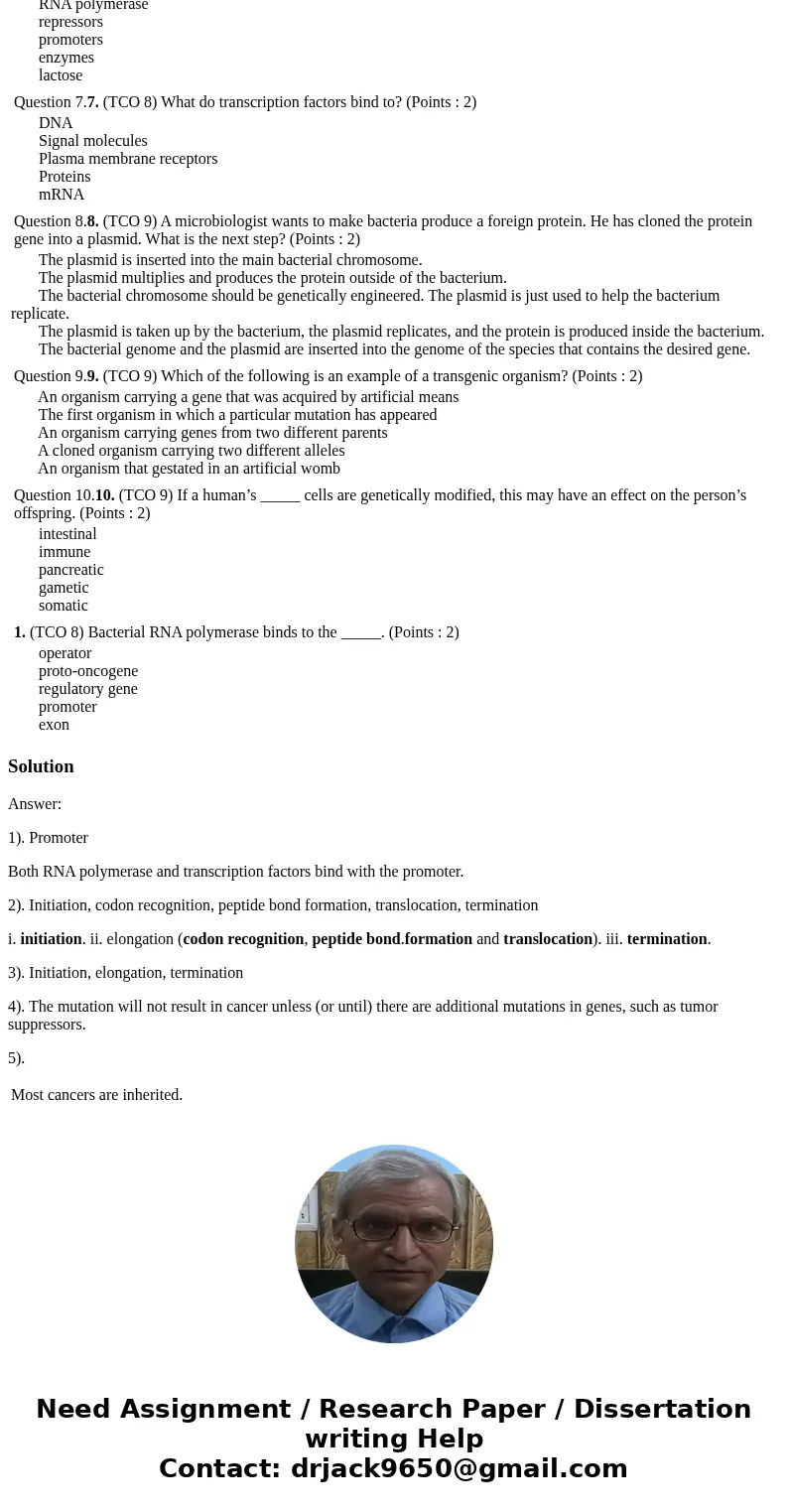1 TCO 8 Bacterial RNA polymerase binds to the Points 2 ope
proto-oncogene regulatory gene promoter exon |
Initiation, translocation, codon recognition, peptide bond formation, termination Initiation, codon recognition, translocation, peptide bond formation, termination Initiation, peptide bond formation, codon recognition, translocation, termination Initiation, peptide bond formation, translocation, codon recognition, termination |
Initiation, elongation, termination Tailing, capping, splicing Capping, tailing, splicing Elongation, initiation, termination |
The mutation will deactivate the proto-oncogene. The mutation will inevitably cause cancer. The mutation will have a greater impact on increasing cancer risk only if the person is elderly. The mutation will inhibit cell division. |
Mutations that occur in somatic cells can be passed from parent to offspring. Not every individual with the mutation will get cancer. Lifestyle will have little impact on cancer risk for these individuals. Most cancers are inherited. |
repressors promoters enzymes lactose |
Signal molecules Plasma membrane receptors Proteins mRNA |
The plasmid multiplies and produces the protein outside of the bacterium. The bacterial chromosome should be genetically engineered. The plasmid is just used to help the bacterium replicate. The plasmid is taken up by the bacterium, the plasmid replicates, and the protein is produced inside the bacterium. The bacterial genome and the plasmid are inserted into the genome of the species that contains the desired gene. |
The first organism in which a particular mutation has appeared An organism carrying genes from two different parents A cloned organism carrying two different alleles An organism that gestated in an artificial womb |
immune pancreatic gametic somatic |
proto-oncogene regulatory gene promoter exon |
Solution
Answer:
1). Promoter
Both RNA polymerase and transcription factors bind with the promoter.
2). Initiation, codon recognition, peptide bond formation, translocation, termination
i. initiation. ii. elongation (codon recognition, peptide bond.formation and translocation). iii. termination.
3). Initiation, elongation, termination
4). The mutation will not result in cancer unless (or until) there are additional mutations in genes, such as tumor suppressors.
5).
| Most cancers are inherited. |


 Homework Sourse
Homework Sourse